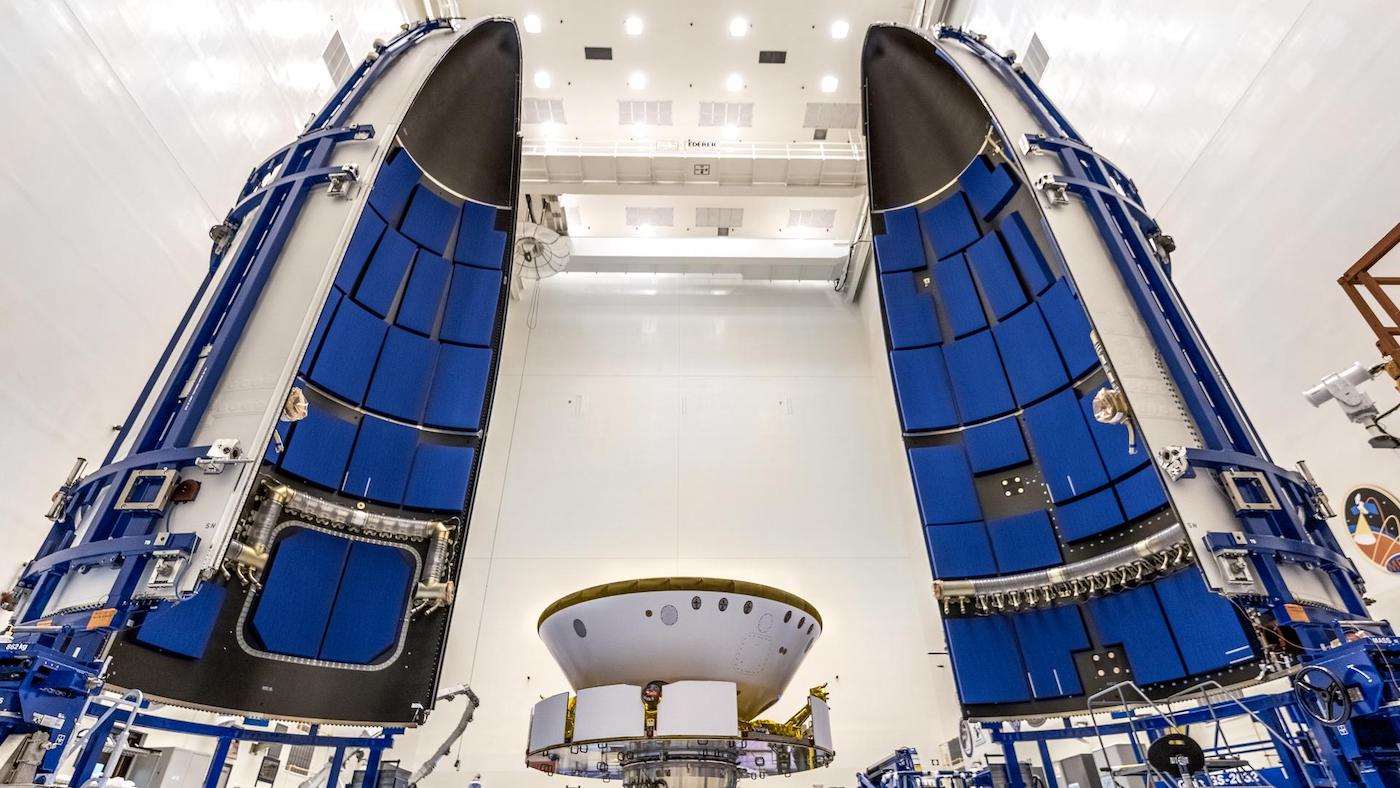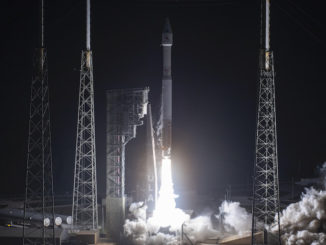
The launch of NASA’s Perseverance Mars rover and Ingenuity Mars Helicopter has been delayed two days to July 22 after an issue with ground support equipment at the Kennedy Space Center held up encapsulation of the spacecraft inside the payload fairing of its Atlas 5 rocket.
NASA said officials set a new target launch date for the Mars 2020 mission of July 22 “due to a processing delay encountered during encapsulation activities of the spacecraft.”
There is a two-hour launch window July 22 opening at 9:35 a.m. EDT (1335 GMT). NASA says the mission has until Aug. 11 to launch this year and still reach Mars on a direct seven-month journey, but officials are discussing extending the launch period a few additional days.
“Additional time was needed to resolve a contamination concern in the ground support lines in NASA’s Payload Hazardous Servicing Facility (PHSF),” NASA said in a brief statement Wednesday.
NASA said the spacecraft and launch vehicle are healthy, and encapsulation of the rover is being completed this week inside the PHSF, a climate-controlled clean room where NASA has prepared numerous interplanetary missions for launch.
Mary MacLaughlin, a NASA spokesperson, said Wednesday that the Perseverance rover and launch shroud will be mounted on top of their United Launch Alliance Atlas 5 rocket Saturday inside ULA’s Vertical Integration Facility near the southern perimeter of pad 41 at Cape Canaveral Air Force Station. That will kick off a series of connectivity and interface tests to ensure good data links between the Atlas 5 and the Mars 2020 spacecraft.
ULA teams completed a countdown rehearsal on the Atlas 5 rocket — without its Mars-bound payload — Monday at Cape Canaveral. The launch team loaded kerosene, liquid hydrogen and liquid oxygen propellants into the Atlas first stage and the Centaur upper stage, and halted the simulated countdown just before ignition of the Atlas 5’s RD-180 main engine.
ULA returned the rocket to the VIF from pad 41 Wednesday to ready the launcher for the arrival of the Perseverance rover.
In the final weeks before launch, ground crews will install the Perseverance rover’s plutonium-fueled power source through a port in the side of the Atlas 5’s payload fairing.
The Mars rover — about the size of a small car — will be powered by the Multi-Mission Radioisotope Thermoelectric Generator, or MMRTG, throughout its mission.
Built at NASA’s Jet Propulsion Laboratory, Perseverance was enclosed within its entry, descent and landing capsule in recent weeks at the Kennedy Space Center. The 1.6-foot-tall (49-centimeter) Ingenuity helicopter, set to become the first aerial vehicle of its type to fly in the atmosphere of another planet, is attached to the belly of the Perseverance rover for the trip to the Martian surface.
Perseverance and Ingenuity are mounted to a rocket-powered descent stage that will set the rover on the Martian surface using a tether. Landing is scheduled for Feb. 18, 2021, and mission managers say the Perseverance rover will attempt the most precise touchdown ever on Mars.
Perseverance carries a cluster of scientific instruments and 25 cameras to explore a region of Mars called Jezero crater, which is home to an ancient dried-up river delta.
The rover will also collect rock core samples for eventual return to Earth on a future mission. Scientists will search for the signatures of ancient life in the rock specimens that come back to Earth.
Email the author.
Follow Stephen Clark on Twitter: @StephenClark1.



